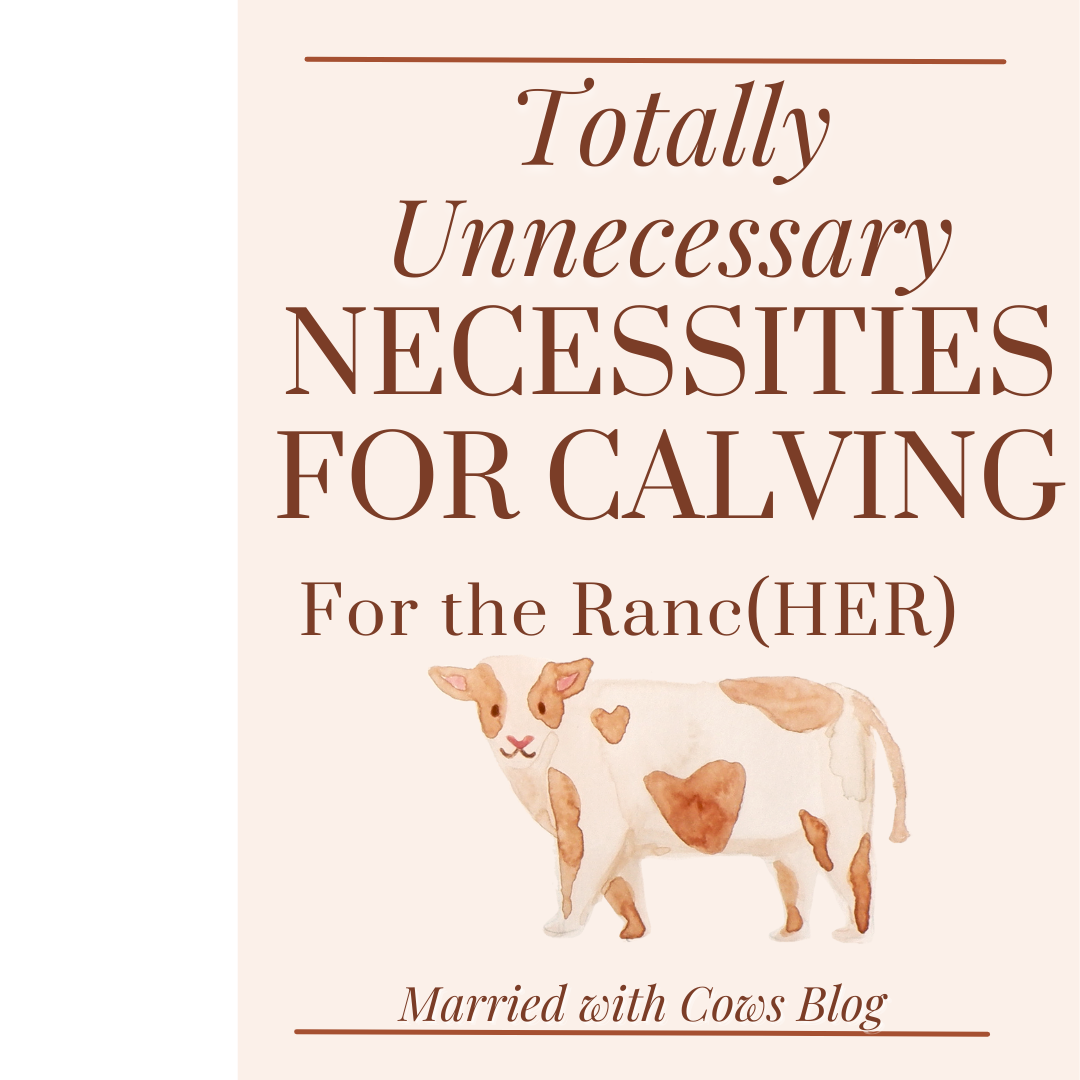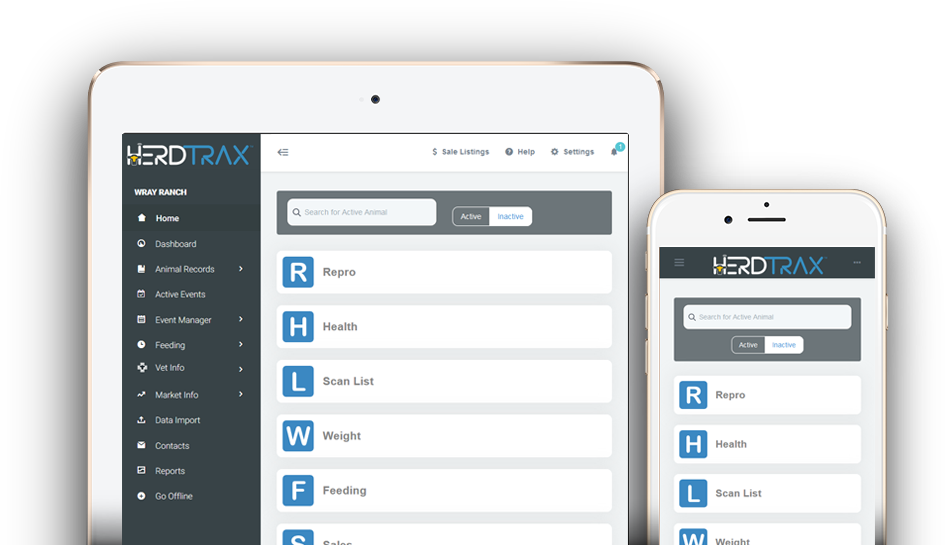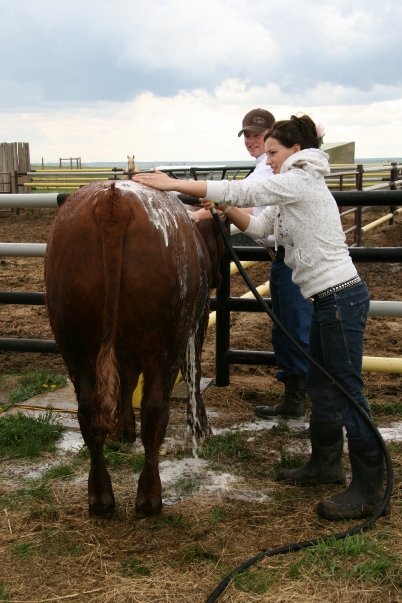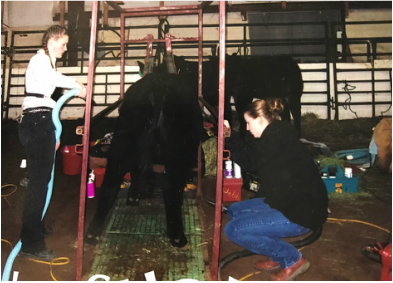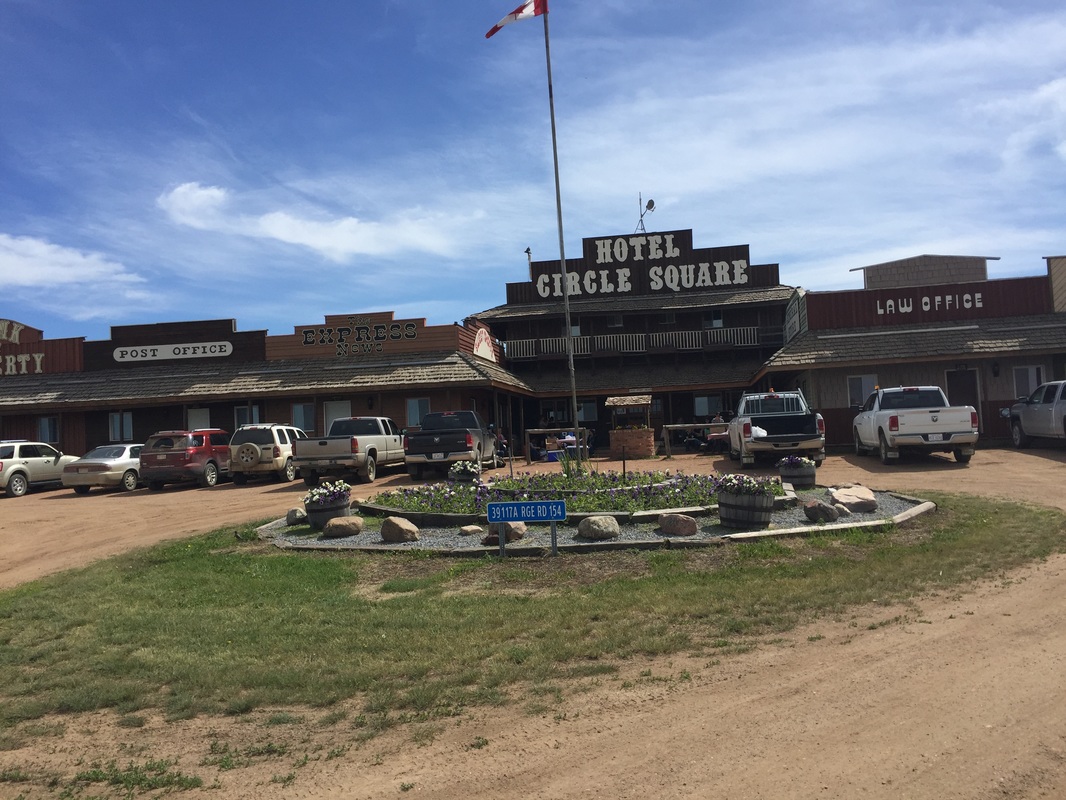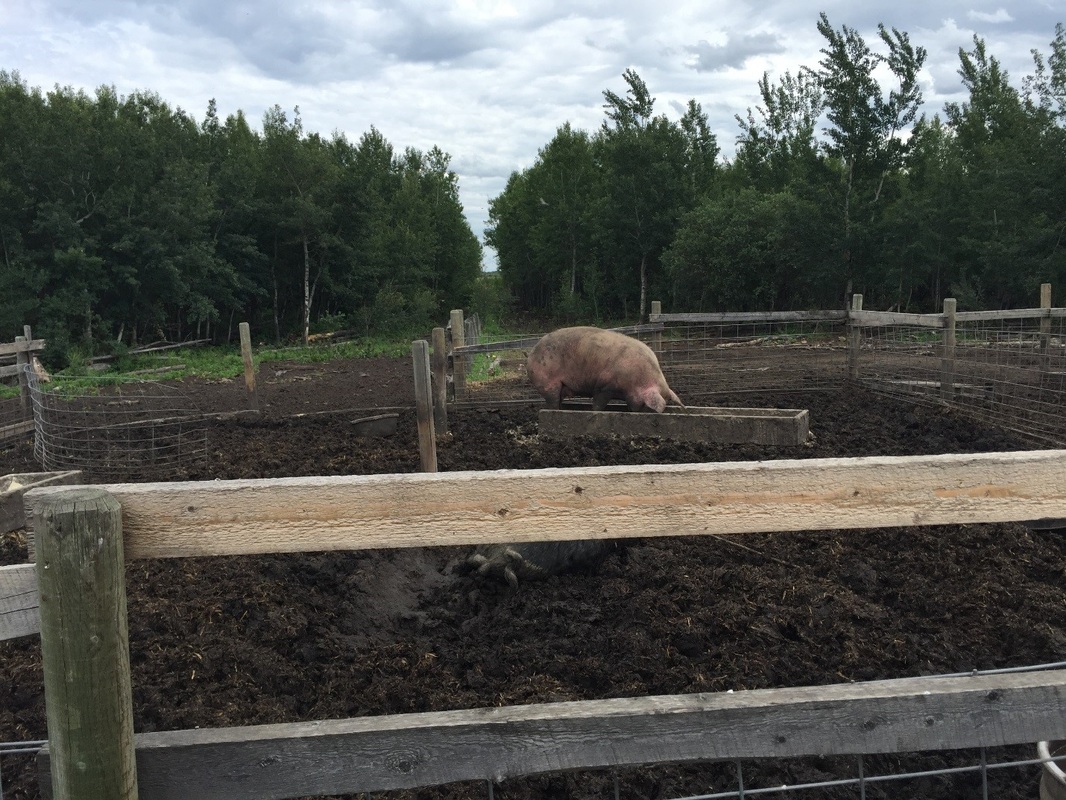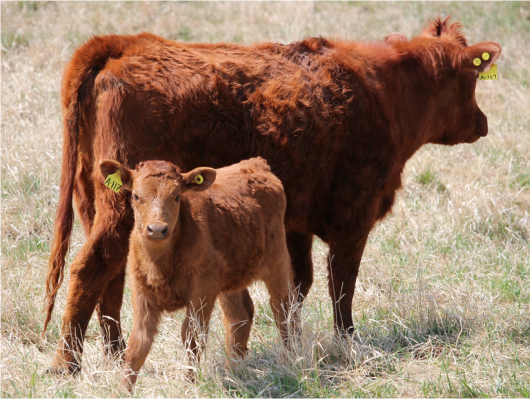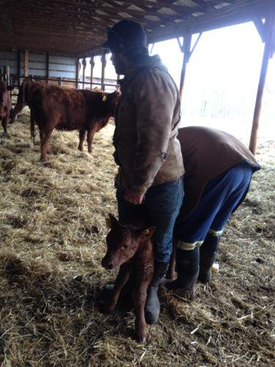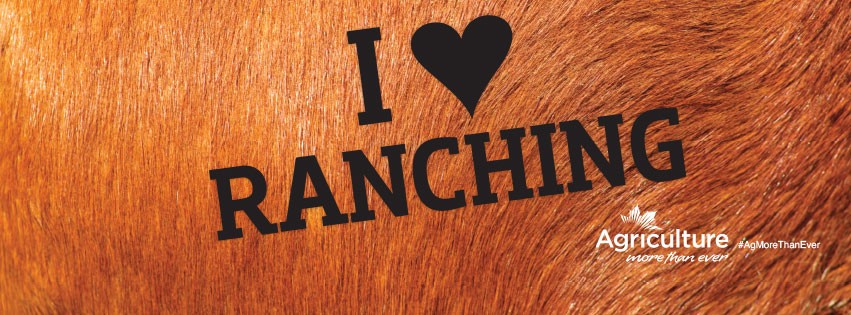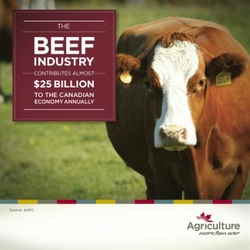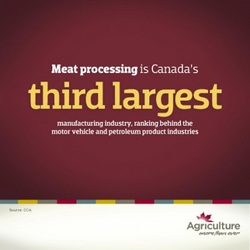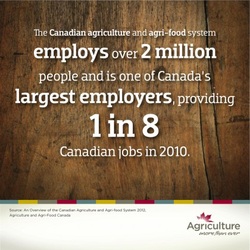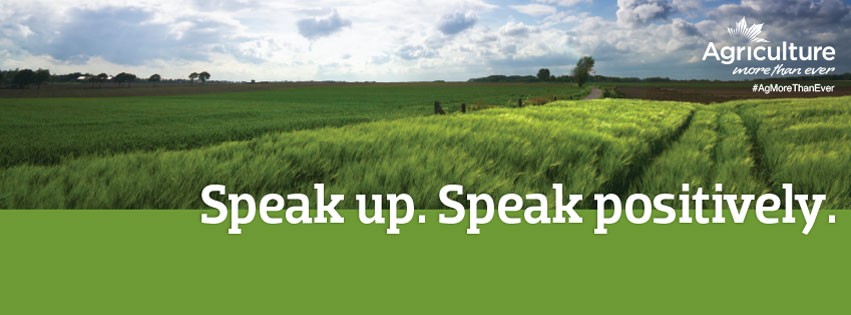|
Yes the necessities of calving usually include chains, tags and bagged colostrum. But that's not what this post is about. This calving prep post is all about the goodies that you don't need, but as a rancHER these will make the stressful (in my case, chilly) time of year just that little bit better!
Lamb's Soapworks Lip Butter. Because winter. You can check out their website or if you're local I got mine as a Christmas gift from Vintage Nineteen89 in Brooks! I have Vanilla Bean and it is HEAVEN.
Running M Brand headbands (fleece or regular, depending on your calving weather) & scrunchies for that wild hair. If that doesn't tame things, just go ahead and get...
Rustic Rose's Farm Hair Don't Care sweater
The Bunkhouse silk scarves. Nicole always has the best scarves, but if you are a little more artistic than I am, you'll need to snatch up one of her Color Me scarves. That's right, you can make your own design! There are also the coolest kids scarves in the Color Me collection to keep your kids busy (maybe while you've ran out to the barn to check on a mama!).
Sweatpants. While you're at The Bunkhouse, you'll definitely need to grab "the cows don't care" sweatpants because who actually wears pants under their carhartts?
Some friends of mine had GREAT suggestions for keeping those legs warm, too. One suggested Lulu Lemon lined studio pants & the other suggested good ol' classic wind pants over your yoga pants. She made a great point... its much easier to run from a cow in yoga pants than carhartts! ;) Plus I love the wind pants idea because you could put them over anything and still have clean pants underneath.
Ciara Sandum Photography Go-Mugs because you'll need alllllll the coffee for those long days (and nights). Mental Note: Restock the Baileys ASAP! And of course I'm going to encourage you all to get the mug with our Whiskey Creek Ranch heifers on it ;) but Ciara has lots of cute go-mugs to choose from!
I don't know about you all but calving time for us usually coincides with little sleep. Whether its waking up to check calves or an overactive brain once we do lay down, I've recently found a few things that help us get back to sleep fast.
Here's a link to our favorite Weighted Blanket Life. Changer.
Essential oils in the diffuser. My favorites are eucalyptus or peppermint as they make me feel like I'm at the spa :). Lavender, chamomile, bergamot and ylang-ylang are also supposed to be great for sleep, but I'm new to this oil thing and stick with the ones I know, ha!
The best way to ensure you fall asleep after a cow check... don't get out of bed! We use our ipad (bigger screen than our phones) to check the camera- that way you don't even get cold 99% of the time. A blog post on our calving camera systems coming soon, since I consider them 100% necessary to our operation!
And finally, here is a list of random unnecessary necessities I like to stock up on in the house before calving as you never know when you're going to get to town...
1. Bailey's (no joke, it had to be in here twice) 2. COFFEE. All the coffee. 3. Vitamins C & D and Cold FX (also recommended by friends on Insta- a must have!) 4. Yeast & bread flour... If you don't have one, invest in a bread maker. There is nothing yummier (and more satisfying) that pushing a button and having a warm loaf of bread or buns when you come in from a cold calving check. Trust me, you'll look like a hero! 5. Meal Prep. Yes I don't leave the farm during calving. I'm here all day nearly every day for weeks on end... but that doesn't mean I want to be cooking ;). So I try to make things a little easier on myself by prepping some meals and a lot of snacks that I can pull out of the freezer and warm with minimal effort. More on that to come! 6. Kids activities. This is a new one for me. My three year old is BUSY. And when I need to rip out to the barn for a few minutes or do a check where I don't want to burn 15 minutes dressing/undressing a toddler, its best to have her busy. Hello DOLLAR STORE! Anything crafty, and I'm there. (Minus paint, because we all know how that turns out unsupervised). 7. Batteries for those flashlights/headlamps. Check and see what sizes you need and stock up. Also for those kids toys ;)
What are your must-have luxuries for calving season? Comment below!
1 Comment
In case you remember from the 2016 blog called Our Cow/Calf Tagging System, I am a bit particular when it comes to keeping track of cows and writing down records. At the time, we had quite an extensive record keeping system we developed through Excel. As much as we love a good spreadsheet, we were wanting a bit easier system (where I didn't have to write the code) to keep our cow/calf records up to date. Enter, HerdTrax.
HerdTrax is a herd management software developed by Dr. Troy Drake, which allows you access to carcass data. Once you enroll in HerdTrax, you can choose to retain ownership of your cattle until harvest, through Dr. Drake's extensive list of feedlots. Once harvested by Cargill, you are able to see the carcass data from your actual calves, link it back to their dams and sires, and make management decisions that benefit both you and the feeder. The idea is that you can cull the cows that don't make you money, and invest in the cows that do. Now. I'm not here to tell you what to do, or even that this is the best software out there. However, I am here to share with our readers what has worked for us. On the data entry side of things, HerdTrax is fairly simple to use. While not in an actual App form, you can use HerdTrax on your phone, ipad or computer, to enter data as you complete work on the ranch. We enter individual treatments, calving records, breedings and pasture movements on the go. Because I am somewhat of a worry wart, I do still write down herd treatments, group vaccinations, etc on paper, entering them into HerdTrax later. I know, I know, I shouldn't be doing that in this day and age, but I am secretly an 80 year old Grandma who doesn't trust my entry skills, or that my phone won't crash and somehow lose all my data (I don't think that can even happen). Being an excel gal, I do notice the odd weird glitch or inconvenience in the HerdTrax software, but honestly, whenever I do, I email Dr. Drake and he fixes it. It's an easy to use program, has all the data fields I was looking for, and can even allow you to upload up to 6 photos for each animal (hallelujah!). Overall, I haven't found any other software programs I prefer. On the data sharing side of things, this software is pretty legit. When we retain ownership of our calves, the data is shared directly with the feedlot and I can see how all my calves are performing right until harvest. I also love the fact that I get carcass data back, allowing us to make management decisions that actually impact our product. Thinking back, it was actually crazy that we were selling a food product, but had no idea how that product yielded, tasted, looked or sold to consumers. WHAT?! In any other industry that would be insane. Only lately, through programs like HerdTrax or the CRSB pilot, is data being shared all the way from producer to harvester. And since all your data is at a click of a button, even if you're not retaining ownership through HerdTrax, you can email that data to anyone that wants it (perhaps a new marketing tool?). All i can say is it was time, beef industry, it was time! I couldn't believe the cows that were making me (and the feeder) the most money. Let me tell you, it wasn't always my favorite cow with perfect composition and seemingly high weaning weights. Sometimes it was, but not always. Sometimes its that ugly cow in the corner that surprises you. We need to, as cow/calf producers, start looking under the hide to improve our profit margins. But, I'll get off my high horse now. Have a read, maybe visit the HerdTrax site, and maybe give it a try. It might not be for you. But i would be going against the reason I started this blog if I didn't share with you guys something I found that works and adds value to our operation. Until next time, Jess Posted By: Jesse Williams I've kicked off my cowboy boots for the night after an amazing first day spent at Northland's Farmfair International in Edmonton, AB and I can't wait to throw them back on for day two. This was my first experience attending the infamous agricultural event that brings cowboys and cowgirls together from across Canada, America and even around the world, but it certainly won't be my last. And if you had the same lame excuses I cooked up over the years for not attending (no, you aren't really that busy), then I am telling you now to get in your truck and head on down. I barely scratched the surface of Farmfair International on day one, spending the majority of my time at the Beef Advocacy Canada booth in Hall B, where the livestock shows were taking place. I also managed to sneak away for a few moments to the Ram Country Marketplace. Below are the top 4 reasons I think every rancher should experience Farmfair International at least once, and this is only from day one! I am looking forward to exploring more tomorrow, like the Heritage Ranch Rodeo, western art gallery, mozzarella making, horse wellness expo , dummy roping championship, of course the Canadian Finals Rodeo and so much more. 1. Farmfair is for families, by families The first thing that I noticed in the exhibitors hall where the livestock shows were occurring, was that Farmfair is a family affair. Generations of cattlemen were cooperating to wash, clip, groom, show and watch livestock. There was an immediate feeling of familiarity and comfort for me when I entered the show barns. It was as if everyone there was part of one big, amazing, happy agriculture family. If you are a rancher who thinks that you might not be "good enough" or "big enough" to attend events like Farmfair International, don't be afraid. I have never felt so welcomed as I was in the exhibitors hall at this event. It truly warmed my heart and reminded me why agriculture is such a pride filled, honorable industry to be a part of. 2. Make connections, make money One thing that has become very evident to me since the Canadian Beef Industry Conference this past August is that the agriculture industry is all about connections. Networking at events like Farmfair International is such a huge opportunity for your farm and your farm profitability. These are the events where any rancher, no matter the size of his herd, can connect with other like minded individuals, learn new things, discuss old strategies, and make business connections that can add value to your bottom line. Whether you are looking for the best breed genetics, the up and coming breed characteristic trends, the latest production technologies or the most innovative tools, you can find someone that shares your interests. And remember that every conversation you have is an opportunity to market yourself, your farm and your products. Don't underestimate the power of a BS session and handshake- it's how a lot of business is done in our industry! 3. Share your story & advocate Don't forget that Farmfair International is set in the middle of Alberta's capital. You are literally surrounded by urban individuals, some of which head on down to Northlands to experience the ol' west. For many of these urbanites, this is therir only exposure to the farm. So what better way to show your pride and dedication to our ag industry than share your story with those who may not understand it? Show off, explain your dedication and demonstrate where the food comes from. Booths like Beef Advocacy Canada, the Alberta Beef Producers and the Canadian Beef Industry Conference/ Cattlemen's Young Leaders are excellent resources to help you share your story. 4. One stop SHOP Ok, so this may not be as exciting to some of you as it was to me, but the shopping is phenomenal! The Ram Country Marketplace boasts over 200 exhibitors that are targeted towards the cow poke folk. There are booths selling cowboy hats and boots, western jewelry, custom saddles, beautiful artwork, cattle & horse accessories, handling equipment, drones, western clothing, children's toys, leatherwork, and the list goes on and on and on! I had an absolute blast going through the marketplace and completed an ever growing wish list, much to my husbands chagrin. I also found something for almost every single person in my family for Christmas, and some great pieces for my the new house build. It truly is a Cowboy's Christmas at Farmfair International's Ram Country Marketplace! Disclaimer: This post was sponsored by Northlands. Opinions expressed are my own. Compensation was received.
It's SHOW TIME!... at Northlands Farmfair International As Edmonton's Farmfair International quickly approaches (November 9-13!) and I prepare for my very first visit to Northlands for this event, I feel the need to share my excitement! I am honored to volunteer my time at the Beef Advocacy Canada booth during one of Alberta's top agricultural shows as part of the Cattlemen's Young Leaders program and am so looking forward to the week ahead!  If you are interested in my adventures over the next week follow me on Twitter (@WhiskeyCreek_AB) or check out the hashtags #Farmfair and #CFR43, or the accounts @Northlands, @CFRedmonton for all the Farmfair International fun! While I have never been to Farmfair before, I have spent a few days in a cattle show ring in my day and all of the hype of this event has made me reminisce about my show days. I scrounged up a few old photos below from when I showed cattle in 4-H as a youngin', so have a look and enjoy a good laugh on me! While I giggled with my husband about my fashion choices, my mind wandered to the popular clubby calf photo that has been going around the internet discussing blow drying cows. While it is true (cattle showers do wash their animals, and dry them!) I thought it might be fun to discuss how and why cattle exhibitors get their animals ready for showing, and maybe how you might get ready for Farmfair too! Why Show Cattle? Why do some cattle owners spend the time to wash and blow dry their animals, drive them to the city and enter them into huge livestock shows like Farmfair International? The answer is simple- to show off! Cattle breeders, whether commercial or purebred, use these opportunities to demonstrate the quality and characteristics of their animals, not to mention all the hard work and pride that goes into breeding cattle. Depending on the breed, you may see a dairy producer show off the superior milk production of their cows, or maybe an Angus breeder demonstrate the carcass quality of their beef, or maybe even a commercial breeder show off the hybrid vigor of their crossbreds for replacement heifers. That's the beauty of livestock shows- there is something for everyone! Whether you are a fellow cattle breeder, beef consumer or someone just interested in farm life, there is no better place to learn the ins and outs of livestock. These shows give livestock producers the opportunity to see a tiny piece of many farms in a one stop shop. While I joke about showing off and bragging about your own cattle, shows like Farmfair International do allow producers to share ideas, learn from each other and discuss production methods that would otherwise never be possible. The 'international' part of Farmfair International truly is just that. People from around the world are invited to and attend Farmfair! How Do You Blow Dry A Cow?
After gaining the trust of your show animal, the next step is getting show ready! I would start by clipping. I used very quiet electronic clippers to do the job. My hubs is still jealous that I used nicer clippers on my cows than on him! The point of clipping is to highlight the best features of your show animal. You can clip to varying degrees, but I typically concentrated on head, top line and tail head clipping. It's important to note that clipping does not equal shaving- just minimal trimming that emphasizes the best qualities, while still looking natural. (Disclaimer: I had some amazing friends and family that always helped me clip my 4-H steers! They did a top notch job and I am still very appreciative of all the hours of hard work they put in!).
Get Show Ready! So now that you have a crash course as to what goes into getting cattle ready for big shows like Farmfair International, you need get ready yourself! And if you are anything like me when I showed cattle, you'll spend weeks getting your cows ready, wake up early in the morning to get the best wash rack spot and the closest grooming chute, work on perfecting that tail head for hours, and then throw on a semi-clean shirt with a bunch of wrinkles and pinch your cheeks for color! Cattle exhibitors often spend all their time and effort pampering their livestock and run out of time for themselves. So don't be like I was (you can do better!). Head on over to the Ram Country Marketplace and grab yourself some fashionable outfits from the many amazing vendors that will be setting up shop. (You can get the full list here.) And even better, grab a thing or two for your friends and family. By the look of the vendor list there is no better place to get your Christmas shopping done! Disclaimer: This post was sponsored by Northlands. Opinions expressed are my own. Compensation was received.
Click to set custom HTM
Posted By: Jesse Williams
If you didn’t catch Part I of the two day Women’s Grazing School Review, click here.
While Part I focused on the on-site tour of Nature’s Green Acres, Part II will be an overview of the classroom portion of the event, which was jam packed with great information. Low Stress Cattle Handling
Dylan Biggs is a Special Areas rancher who has made a name for himself in low stress cattle handling, teaching the subject and working with ranchers across the industry to improve their methods. He believes that every step an animal takes should be voluntary and not relying on force or fear. When it comes to calving, branding, turning out bulls or weaning, Dylan Biggs believes there is a stress free way to handle your cattle. And I would have to agree.
I had seen Dylan speak about his techniques before this Grazing School, but a refresher course never hurts- no matter how long you’ve been in the game. While his methods aren’t anything out of the ordinary, he reminds us to use cattle psychology to make the right things easy and the wrong things difficult when handling cattle. I think every rancher would have to agree that sometimes emotions run high in the sorting pen or when that bull won’t cut from his herd, voices may raise, tears may fall and wives will storm off (come on ladies, you know it’s true!). Whether it’s Dylan Biggs or another herdsman of your choice, I encourage everyone to take a few minutes to refresh their low stress handling strategies and I challenge you to share those methods with someone else. Whether it’s your spouse, your neighbour or your kid, remind them where those blindspots are for a cow, or how to indirectly push from the sides, or maybe just to remember its ok to back up and give that cow some space! With so many consumers looking ever deeper into our operations, it never hurts to reinforce low stress livestock handling methods with your ranch hands. To learn more about Dylan Biggs and his cattle handling techniques you can visit his website at www.dylanbiggs.com or read more in this Grain News Article. Managing Forages from the Ground Up
This was probably my favorite presentation from the whole event. Karin Lindquist, Forage-Beef Specialist with Alberta Agriculture, was an absolutely fabulous speaker. I think I enjoyed her presentation so much because of the immense passion that she spoke with- she truly is a “Range Nerd”, as she put it.
She stressed that the best way to manage our farms is from the ground up. Start by managing your soil first, as it influences what can be grown and how well. I think over the last few years our industry has been doing an amazing job encouraging producers to start thinking about their soil as their top asset. 2015 was deemed the International Year of Soils by the Food and Agriculture Organization of the United Nations and boy did our local research associations do a great job promoting it. (You can head over to http://www.chinookappliedresearch.ca to see what was and still is going on in my area!). Karin then reminded us that to manage your forage, you need to know what plants you have. This can be easier said than done if you don’t have an agriculture degree or a self-proclaimed Range Nerd nearby! However, Karin gave us some great resources to use to identify the plants in our pastures, and assess the health of our range: Alberta Range Plants & Their Classification Range & Pasture Management When Dealing with Drought Alberta Tame Pasture Scorecard Management of Canadian Prairie Rangeland Pasture Planner- A Guide for Developing your Grazing System HR on the Ranch
Abby Verstraete, Alberta Agriculture & Forestry’s Rural Business Specialist, was on hand to chat about the importance of Human Resource Management on the farm. This topic is all too often overlooked when it comes to employees on farms and ranches, maybe due to the seasonality or wide variance in positions. Country Guide recently interviewed Abby about attracting and retaining workers on the farm. You can read it by clicking here.
Overall, the two day Original Grazing School for Women was a fun, information filled event that I would recommend to others. With such a diverse group of ranching ladies from across the province and experts from across our industry, this event and others like it, are worth the time and investment in my opinion. After all, the best way to improve your operation is to ask questions, meet other ranchers and learn from their experiences!
I absolutely LOVE learning and I think there is so much to learn from visiting other people’s ranching operations. I find this is true no matter how many times you’ve visited or how good of friends you are. I literally learn something new every time I go to somebody’s branding, help move their cows, or even just go for an evening beer. This is why I am so excited to share with you what I learned at the Women’s Grazing School. I took lots of notes so this is basically a condensed version of the entire school… thus it’s being delivered in two parts!
A few weeks ago I was lucky enough to attend The Original Grazing School for Women hosted at the Circle Square Ranch near Halkirk, AB. Over 50 ladies from all over Alberta gathered to be part of this annual educational event aimed at sharing livestock grazing practices to increase production, return on investment and biodiversity on the ranch. This was my first grazing school and if anyone is interested, there is another one happening called The Southern Alberta Grazing School for Women this July 27-28 in Elkwater, AB!
Day one brought us to two different ranching operations near Killam, AB. The first stop was at Nature’s Green Acres, owned and operated by Danny and Shannon Ruzicka. Their farm raises grassfed beef and pork that they direct market to consumers and in particular, the Rge Rd Restaurant in Edmonton, AB. Danny, Shannon and their kids were very gracious to let us tour their farm and gave us some insight into their rotational grazing strategies.
Rotational Grazing Cattle
Because they restricted direct access to the creek, they needed to provide a new watering source for their cattle. They decided to create a wet well off the creek, installing a Nose Pump with two watering bowls that will suit up to 100 head of cows. While they raved about their nose pumps I am a bit more skeptical, based on our own recent experiences.
Now I am a numbers girl so the burning question I had was what their increased grazing days or production was. Shannon explained that they hadn’t really monitored the before/after as that was just one more thing that would have stopped them from finally getting their rotational grazing system up and running. I can’t blame her, but I fully intend to monitor the difference in our cow days/acre once we get ours fenced! Hopefully we can share this information with you next year!
Bush Raised Pigs
Danny and Shannon also shared with us their “bush raised” pigs. Of course the first thing I asked was What is a bush raised pig!? Simply put, they are pigs that are raised outside in rotational grazing paddocks that have heavy tree/bush cover, versus the traditional corralled or indoor conventional methods. Now I must give my kudos to the Ruzicka’s, here. I think this is a genius marketing strategy- they sound different, natural, and leave me wanting to know more! While I don’t think I will be able to provide bush raised animals on my flat, treeless prairie landscape, maybe I will have to try prairie raised pigs!
The farrowing sows, sows with piglets and weanling pigs were all separated into different paddocks. Each paddock had significant tree/brush cover that allow the pigs protection from the elements. The pigs graze the grass growing between trees, root up the soil and help break down the deadfall. When asked if the pigs harm the healthy trees, Shannon shared that it does take some management to ensure the pigs are moved from paddock to paddock before they overgraze and begin damaging healthy trees.
The Ruzicka’s shared with us that the breed of pig is very important to rotational grazing. Because the pigs are outside year round, it is essential that they use heritage breeds. These breeds are more adaptable to harsh weather and have thicker hides and longer hair for cooling/heating. Pigs that are raised in indoor facilities would not be suitable for their situation. They did say that you should check with your slaughter facility prior to purchasing heritage breeds as the thick hide is often a source of contention during butchering.
They don’t seem to have issues with predators, but one excellent question posed by a participant was “Will they decrease gopher populations?”. It is a very intriguing question as they may destroy the gopher tunnels through rooting and perhaps they could even eat them? If anyone has any experience I would love to hear about it!
Unique Dining Experience
Day one of the Women’s Grazing School was definitely worth it for me. I came away with great ideas, some what-to-do's and some what-not-to-do’s, and enjoyed visiting with participants from around the province. If you are interested in other grazing schools for women, visit the Grazing School for Women Facebook page or contact your local Ag Fieldman.
Posted By: Jesse Williams
I have had a lot of questions about how we structure our cow/calf management tags in our herd, as I have posted a few pictures of making tags and our DIY Tag Board, that seemed to confuse people. This leads me to believe we must be doing things rather different than anyone else (which could be a good or a bad thing) and so I thought I would take a few minutes to share what we do and why. I would LOVE to hear how you do management tags on your operation because there is always room for improvement!
The International Standard
We do follow the international tag lettering system for our COWS. This handy dandy little system gives your cows a letter for their tag that corresponds with the year they were born. This is super convenient when buying cows at the auction mart- IF (and I stress, IF) the previous owner follows that same international standard. I am learning more every day that there are less and less people following it, which I always ask myself 'Why not?'. If you have any insight into that, please let me know!
Cow Tags
As mentioned above, we give all cows their letter corresponding to their year of birth, followed by a management number. We simply started at 100 when we began our herd. This is because we have very similar cows to our family members, who we also sometimes run in the same pastures or management groups. By starting all our numbers in the 100's, (their's start in the single digits), we can easily identify whose cow is whose.
We also use a different colored tag for every year of birth. This is simply another aid to allow us to identify a cow at a quick glance. Sometimes you may only be able to see the number on the tag because of long hair, but if its orange you know that is likely a 'B' cow, for example. It is probably over kill (and does make for a LOT of extra tags always hanging around in every color) but it does work well for us.
Reusing Tags & Saving Money
In order to save a bit of money we reuse the same calf tags every single year. At weaning we cut the button off the back of each tag, saving the tag for the next calf crop. We do this when the calves are in the chute ready to load onto the liner to the auction mart. We simply lean over the chute with a tag cutter and remove the tags. Now this is easier said than done and I'll be the first to admit it. In previous years we had an old rickety chute that had bars across the top. Those bars were just in the right spot to bonk your head when you weren't paying attention. We do have a better chute now, but it is still somewhat inconvenient and been a topic of discussion in our house for some time. I guess the cheap side of us won over because we are still doing it!
After weaning, we take the tags in the house, wash them in soapy water to remove any old dirt and use a knife or pen to pop out what's left of the old button. We then use a tag pen to trace over the existing letter and number to make sure it is vibrant and readable for the next year.
Economics on reusing tags:
*These are the actual costs of tags and buttons we purchased in 2015. Tax not included. Large Allflex 2 piece tags/buttons: $30.44/ 25 tags & buttons ($1.22/head) Allflex buttons: $14.59/ 25 buttons ($0.58/head) Savings: $15.85/ 25 head ($0.63/head) For a herd that produces 100 head of calves continuously, you would be saving $63.40 per year (or $0.63/head). Now that doesn't sound much, and it really isn't, but 63 bucks is 63 bucks in my opinion. My father in law loves to say that when you are young, you trade work to save money, and when you are old you trade money to save work. Clay and I are still young so I think we will continue to take the extra few minutes to remove tags, wash them and reuse them each year, at least for now. Note: We have a very low tag loss rate in calves. In 100 head, we might lose one per year, if that. Pros/Cons of Our Tagging System This yearling got it's old tag removed when she became a permanent part of our herd. The A corresponds to her year of birth in 2013. This yearling got it's old tag removed when she became a permanent part of our herd. The A corresponds to her year of birth in 2013.
While this is the way the hubs' family has been doing it for years, my number one concern when I was introduced to it was the increase in time/work to tag replacements twice, plus the stress of two tagging steps for replacements, or the removal of the tags for calves going to market. They have to be tagged at some point in their life, but the second tagging for replacements is usually done in the chute when the heifers are receiving annual vaccinations. And because we use the same hole that their original tag was in, I think the stress is fairly limited.
For the calves being sold to market, I think it would be fair to say there is some stress on weaning day and adding an additional few minutes in the chute trying to wrangle a tag out of their ear likely adds to it. However, I don't know how much stress or how much shrink that would equate to, and if it would be enough to cancel out the savings from reusing tags. The other option I see a lot of producers use is to tag at branding rather than at birth. I am not particularly fond of this method just because it is hard enough to know which calf goes with which mother when they have corresponding tags. Without tags for a few months before branding would always make me worry I have the wrong calve/cows matched up. This would wreak havoc on my record keeping system as my data would no longer be reliable. If a cow lost her calf and adopted another (which most certainly happens), and I use the adopted calf's data as that cow's progeny, I could have very skewed results as to the genetic characteristics that mother throws.
At the end of the day, this is how we've been using management tags in our herd. It may or may not work for you herd but we sure would love to hear how your system might differ. Leave a comment or send us an email!
Did you know that the average beef cow herd size in Canada is 63? Or that Western Canada finished 75% of all cattle in Canada? How about that Alberta is home to 39.3% of the beef cows in Canada? The Canadian Beef website (www.beefinfo.org) has an excellent array of beef industry tid bits and even free fact sheets you can print off! Click here to go to their order center with all the available fact sheets. You can also follow them on Twitter @CanadianBeef for up to the minute Beef Industry updates! Below is just an example of the great beef resources available on their site.
Besides supplying you with tasty, tender, mouth watering steaks, the beef industry and Canadian agriculture have some major impacts on our economy!
Check out the Ag More Than Ever movement! This organization focuses its efforts on enlightening individuals about the Agriculture Industry and all that it does for Canadians. By visiting their website http://www.agmorethanever.ca/ you can become an Agvocate and begin starting positive dialogue and improving perceptions about our unique, ever-growing, oh-so-important (and exciting!) industry. The website is full of resources to help you get started, with facebook cover photos, twitter backgrounds, informational photos, brochures, etc that let the world know how much you love agriculture and how beneficial it is globally. Check it out!!
|
A Blog About Our Life, Love & Lessons Learned on the Ranch
Categories
All
in the mediaArchives
February 2024
|
